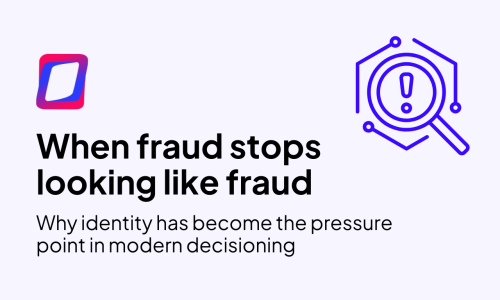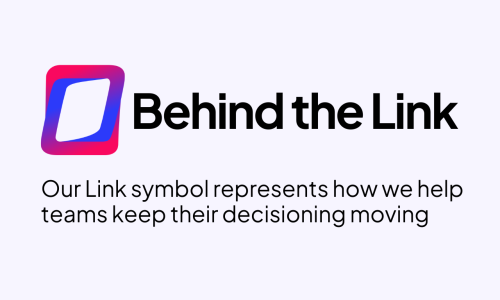Detecting Fraud in a Digital World: How Data and Machine Learning are Increasingly Important to Keep Up with Online Fraud Trends
The digital landscape has transformed how consumers bank, shop, and interact online. With this shift, however, has come a significant rise in digital fraud. As online banking and applications become more prevalent, fraudsters have found new ways to exploit these systems.
Traditional identity verification methods are proving inadequate, and lenders must now turn to data and machine learning to keep up with these evolving threats.
The Growth of Online Banking and Digital Fraud
Over the past five years, online transactions have surged by 50%, a trend showing no signs of slowing down. The convenience of online banking and digital applications has driven this growth but has also opened new avenues for fraud.
Fraudsters are increasingly sophisticated, often outpacing once-effective traditional security measures. For example, they now easily bypass standard ID verification methods using stolen or synthetic identities. This creates a pressing need for more advanced and adaptive fraud detection strategies.
Challenges of Traditional ID Verification
Traditional ID verification methods, which rely heavily on physical identifiers such as driver’s licenses or social security numbers, must be more effective. Fraudsters can now easily acquire these identifiers and use them to their advantage.
The challenge is that these methods were designed for an era when physical presence and paper documentation were the norms. In today’s digital world, they fall short because they do not account for the vast number of digital footprints individuals leave behind.
For instance, a fraudster might successfully open an account using someone else’s information, bypassing all traditional checks. Once this is done, they can carry out fraudulent transactions with little resistance. The old methods of verifying identities based solely on static information are no longer sufficient. They need to capture the dynamic and multi-faceted nature of digital identities.
The Critical Role of Data in Fraud Detection
Data has emerged as a crucial asset in combating digital fraud. Lenders must constantly seek new data sources to enhance their fraud detection capabilities. Digital identity networks compile data from various digital interactions and provide a comprehensive view of an individual’s online behavior. These networks can include information from social media profiles, email addresses, IP addresses, and device usage patterns.
This wealth of data allows a more nuanced understanding of each user’s digital identity. For example, a transaction flagged from an unfamiliar IP address or device can be an immediate red flag. Institutions can detect anomalies that might indicate fraudulent activities by continuously analyzing these digital breadcrumbs.
Leveraging Machine Learning for Adaptive Fraud Detection
Machine learning has become a game-changer in fraud detection. Unlike traditional models, which require manual updates and can quickly become outdated, machine learning models continuously learn and adapt. These models can be updated monthly, allowing them to keep pace with the ever-changing tactics of fraudsters.
Machine learning algorithms analyze large datasets to identify patterns and behaviors indicative of fraud. For instance, they can detect if multiple accounts are being accessed from the same device or if unusual activity on an account deviates from routine behavior. By spotting these patterns early, financial institutions can prevent fraud before significant damage occurs.
A real-world example is a financial institution that received 185,000 fraudulent applications in a single month. Without machine learning and data analytics, detecting and managing such a high volume of fraud would be nearly impossible. Machine learning enables these institutions to filter out fraudulent applications efficiently, protecting their resources and customers.
Digital Identity Attributes as Key Fraud Signals
In the digital realm, attributes such as IP addresses, email addresses, and device information have become more significant indicators of identity than traditional physical attributes. These digital signals provide a more detailed picture of an individual’s online identity.
For instance, the transaction is likely legitimate if a user logs in from a known device and a familiar IP address. Conversely, a sudden change in these attributes could signal potential fraud.
Lenders increasingly rely on these digital identity attributes to detect and prevent fraud. By cross-referencing this information with known patterns of legitimate user behavior, they can more accurately identify suspicious activities. This shift towards digital identity verification represents a significant evolution in the fight against fraud.
The Future:
Connecting More Identity Data Networks
Integrating more identity data networks will be crucial in countering evolving online threats; these networks, which aggregate data from multiple sources, can provide a more comprehensive and accurate view of an individual’s digital identity. By connecting these networks, lenders can share information about known fraud patterns and suspicious activities, creating a more unified and effective defense against fraud.
For example, if one institution detects a new type of fraud, this information can be quickly shared across the network, allowing other institutions to update their fraud detection models accordingly. This collaborative approach ensures that the entire financial ecosystem benefits from the latest insights and technologies in fraud prevention.
Client Insights:
Founder and CEO of Kevari Shares Insights on Combating New Account and Account Takeover Fraud
GDS Link recently sat down with Adam Elliott, Founder and CEO of Kevari, to discuss the critical role of data and machine learning in combating digital fraud. Elliott highlighted how Kevari leverages advanced data analytics and machine learning models to stay ahead of fraudsters.
By constantly updating its models and integrating new data sources, Kevari ensures that it is always prepared to detect and prevent the latest fraud tactics.
Elliott also emphasized the importance of digital identity networks in providing a holistic view of user behavior. By analyzing digital attributes such as IP addresses and device information, Kevari can more accurately identify and prevent fraudulent activities. His insights underscore the necessity of adopting advanced technologies to combat the ever-evolving threat of digital fraud.
Want to hear Adam discuss this topic further? Listen to The Lending Link episode: “Adam Shares Insights on Combating New Account and Account Takeover Fraud,” below:
Enhancing Fraud Detection: A Proactive Approach with GDS Link
The fight against digital fraud requires a proactive and adaptive approach. Traditional identity verification methods are no longer sufficient due to sophisticated fraud tactics. By leveraging data analytics and machine learning, financial institutions can enhance their fraud detection capabilities and stay ahead of fraudsters.
The future lies in continuously integrating new data sources and the collaborative sharing of insights across identity data networks.
Schedule a personalized one-on-one demo with our experts today to see how GDS Link can help your institution stay ahead of these threats.
Recent articles

When Fraud Stops Looking Like Fraud
Read article
Behind the Link
Read article





